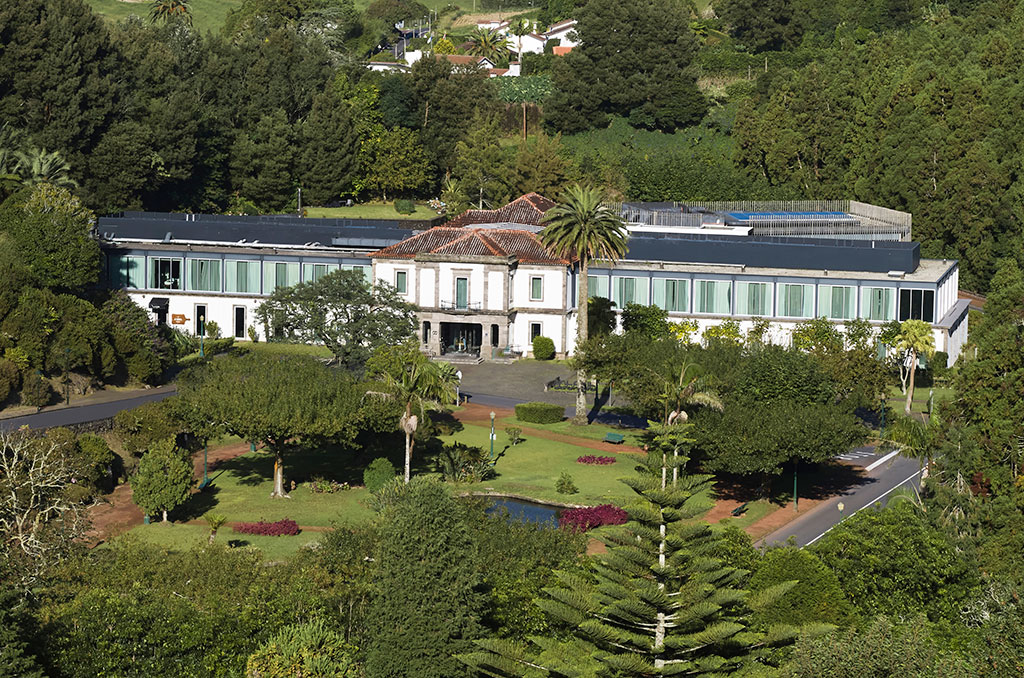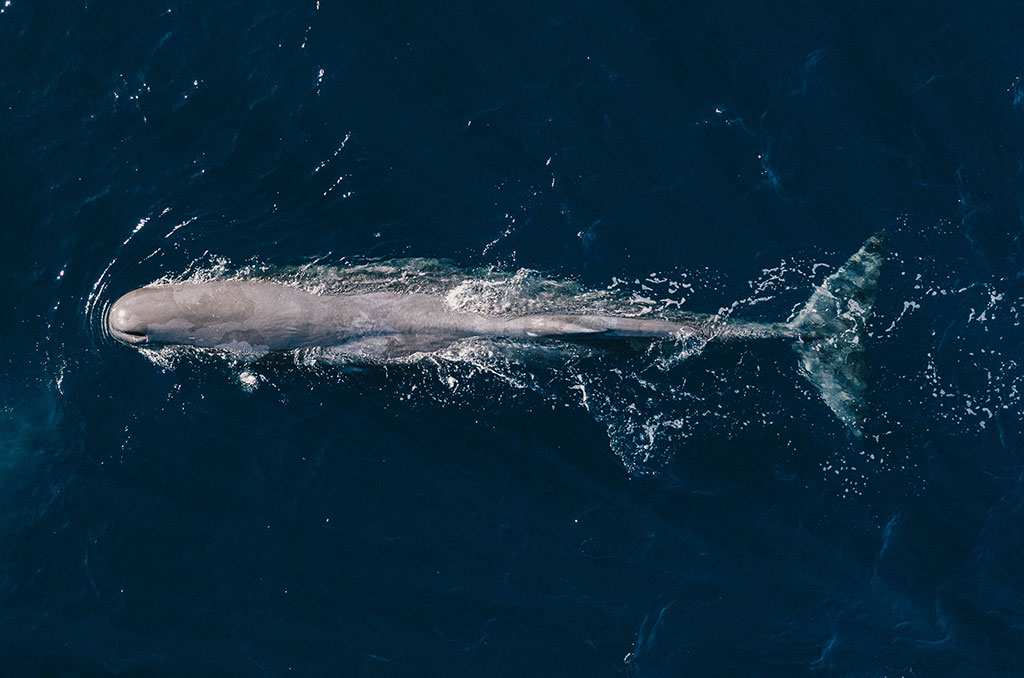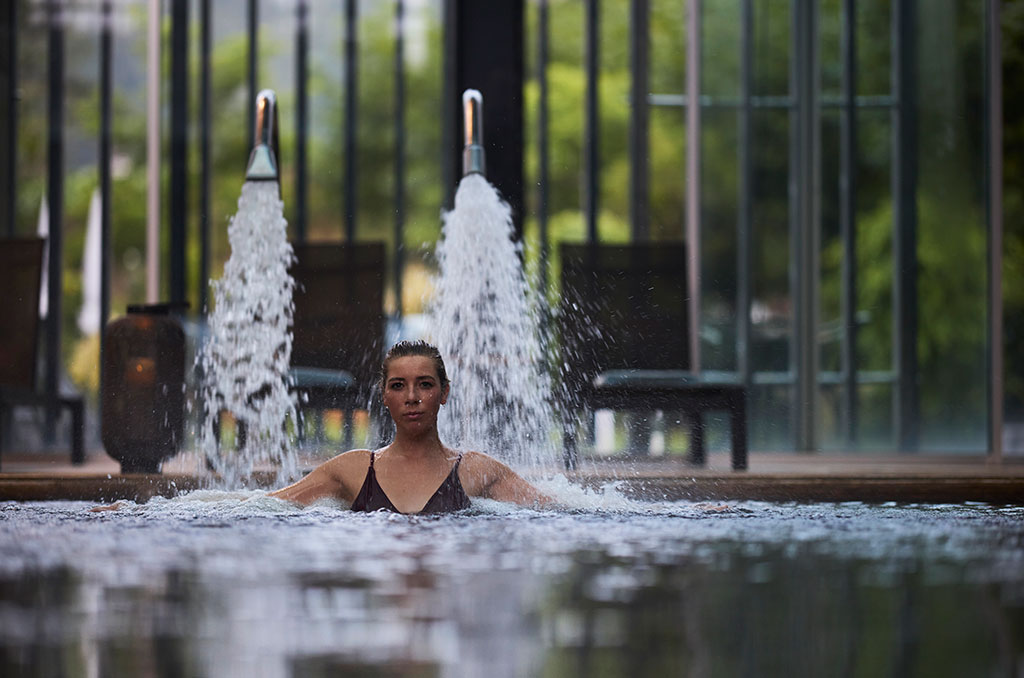Exploring the Azores
Chris Carter looks for whales off São Miguel and tries a spot of volcanic cooking


“Over there!,” came the cry from our guide, Gina, a marine biologist. Our eyes had become accustomed to the hypnotic undulations of the waves and the slow, steady rocking of the Zodiac we were on. Up until this point, we had seen plenty of Portuguese men-of-war – hundreds of them – their purplish gelatinous crested tops peaking above the water and their long stinging tentacles snaking out, hidden below the surface. I wondered at the efficacy of the life vest I was wearing were we to have to bail out. A man-of-war’s sting can be deadly if you are unlucky.
At the raising of the cry, the Zodiac thrummed to life and we skipped across the water towards the sighted whale. Only it wasn’t a whale – it was a large tree branch bobbing up and down. Would we get to see anything? A few years ago, I went on a whale-watching tour at Kaikoura in New Zealand, famed for being one of the best spots in the world for watching sperm whales. And I didn’t see so much as a flipper.
This time, I was off the coast of São Miguel in the Azores. The archipelago, an autonomous region of Portugal, lies almost 1,000 miles west of the mainland, and São Miguel is the largest of the nine volcanic islands. During the summer, British Airways flies the four hours direct to the capital, Ponta Delgada, from London.
MoneyWeek
Subscribe to MoneyWeek today and get your first six magazine issues absolutely FREE

Sign up to Money Morning
Don't miss the latest investment and personal finances news, market analysis, plus money-saving tips with our free twice-daily newsletter
Don't miss the latest investment and personal finances news, market analysis, plus money-saving tips with our free twice-daily newsletter
Up early the next morning after stepping off the plane, I surveyed the waves. It wasn’t long before we were zipping off again. Yes! The tell-tale mist of water spouted into the air. We focused our gaze while keeping a respectful distance, and sure enough, there were sperm whales. Whaling used to be a major industry in this part of the world and they are still threatened as a species.
Eventually, one of the whales lifted its tail and submerged with the rest. It was time to move on. Next, a pod of spotted dolphins rushed to greet us. They swam alongside the boat, gliding through the water, and even performed the odd pirouette in the air before slapping back into the waves. Gina explained that this is one way in which they shed parasites. Lovely.

After a couple of hours, we started to make our way back to Ponta Delgada. The waves had picked up just a little and the Zodiac seemed to spend almost as much time in the air as on the water. But then, we shuddered to an unscheduled stop. All was quiet save for the lapping of the waves against the boat.
But then, there! What was it? Gina couldn’t say for sure, but two or three beaked whales – probably Sowerby’s beaked whales – had come to the surface, distinguishable by their long gunmetal grey noses. This was an incredibly fortunate sighting, as beaked whales are shy creatures who spend most of their time out of sight.
A taste of the islands
Unlike on Madeira, another Portuguese island away to the south, the Azoreans are still getting used to welcoming visitors. And welcome them they do – heartily. The islands have lain off the tourist trail until relatively recently. During the 19th and 20th centuries, large numbers emigrated to the US and Brazil, but not for want of natural riches at home.
Over on the western side of São Miguel, the lake-filled caldera of the Sete Cidades Massif provides a spectacular backdrop to a hike in the hills. On the eastern side, bathers can relax in the steaming thermal pools at Furnas, surrounded by lush, sub-tropical vegetation.
In Furnas, I caught up with São and chef Rubén from Octant Hotels (there is another hotel in Ponta Delgada) to take me through the making of a traditional cozido, a meaty stew. Everywhere in Portugal has its own version. But the Azorean cozido is extra special. Not because of what goes in it (although that is pretty special), but because of how it is cooked. But first to the peeling of vegetables. Carrots, potatoes and taro went into the pot, atop a whole green cabbage cut in half.
Next came the meat – pork fat, beef with a pinch of salt, chouriço sausage, local black pudding wrapped in a leaf to stop it crumbling, pork belly and a whole spatchcocked chicken. No liquid – that comes with the cooking. On went the lid, the whole caboodle was cling-filmed and wrapped in a cloth and voilà, the cozido was ready for the oven. Sort of.
We jumped in the car – pot in the back – and drove the short distance to the lake, beside which are bubbling sulphurous pools. Here, concrete-lined holes have been dug, into which cozido pots are lowered with hooks, to be cooked slowly by the volcanic steam. The hole is covered with a wooden lid, then buried in earth to make it airtight. Seven hours later – after a good hike around the lake and a session in the Octant’s own thermal waters in the spa – it was time to eat.

The meat was succulent, cooked in its own juices and those of the vegetables and delicately spiced with the earthiness of nutmeg and paprika from the sausages. It was a true taste of the Azores.
The whale-watching and cozido experiences were organised for Chris complimentarily by Octant Hotels. Each costs €60 per person (without drinks). Stays at Octant Ponta Delgada and Octant Furnas start from €135 per night, including breakfast, octanthotels.com
Get the latest financial news, insights and expert analysis from our award-winning MoneyWeek team, to help you understand what really matters when it comes to your finances.

-
 The shape of yields to come
The shape of yields to comeCentral banks are likely to buy up short-term bonds to keep debt costs down for governments
-
 The sad decline of investment clubs – and what comes next
The sad decline of investment clubs – and what comes nextOpinion Financial regulation and rising costs are killing off investment clubs that once used to be an enjoyable hobby, says David Prosser